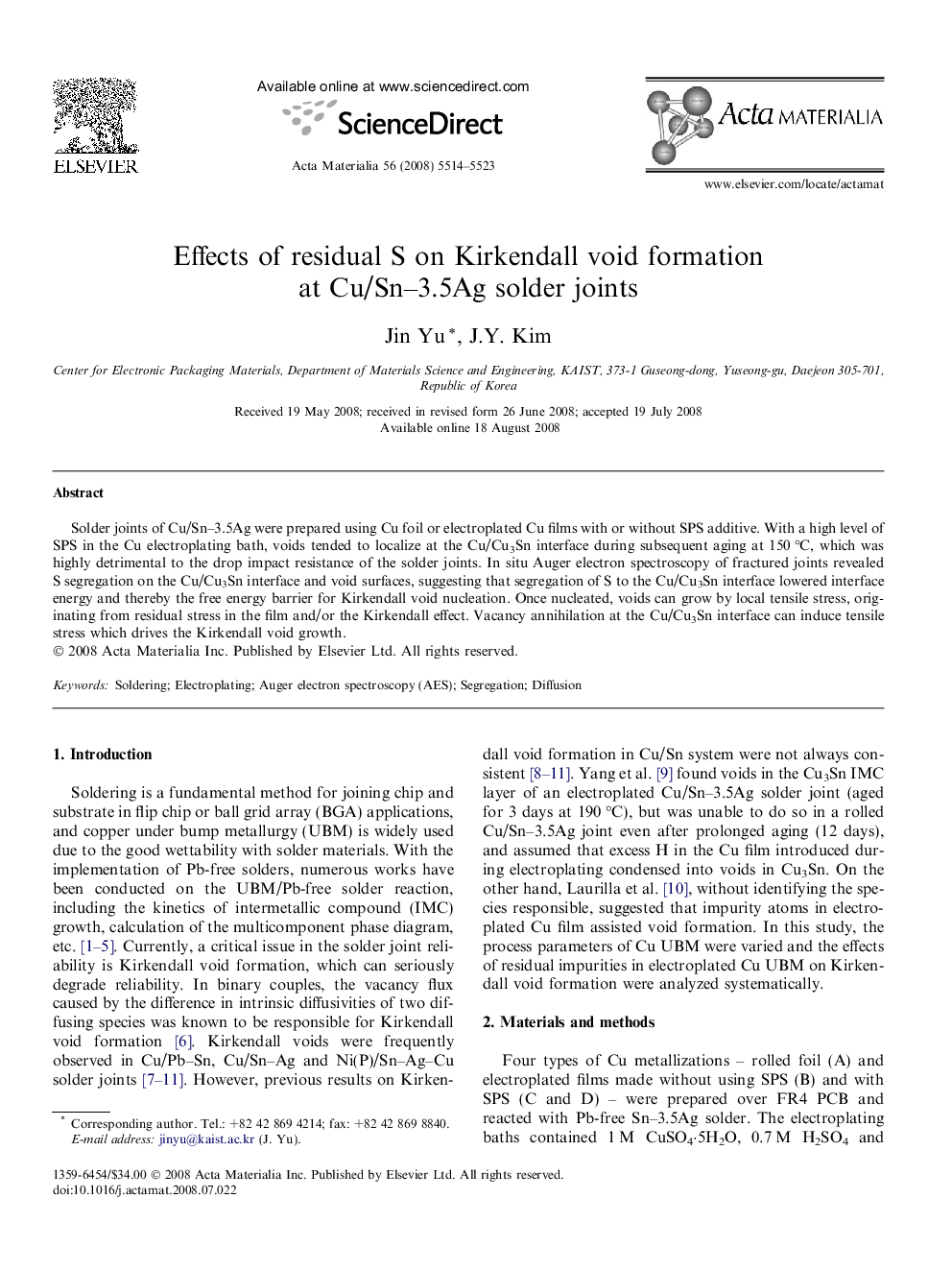| Article ID | Journal | Published Year | Pages | File Type |
|---|---|---|---|---|
| 1449808 | Acta Materialia | 2008 | 10 Pages |
Solder joints of Cu/Sn–3.5Ag were prepared using Cu foil or electroplated Cu films with or without SPS additive. With a high level of SPS in the Cu electroplating bath, voids tended to localize at the Cu/Cu3Sn interface during subsequent aging at 150 °C, which was highly detrimental to the drop impact resistance of the solder joints. In situ Auger electron spectroscopy of fractured joints revealed S segregation on the Cu/Cu3Sn interface and void surfaces, suggesting that segregation of S to the Cu/Cu3Sn interface lowered interface energy and thereby the free energy barrier for Kirkendall void nucleation. Once nucleated, voids can grow by local tensile stress, originating from residual stress in the film and/or the Kirkendall effect. Vacancy annihilation at the Cu/Cu3Sn interface can induce tensile stress which drives the Kirkendall void growth.
